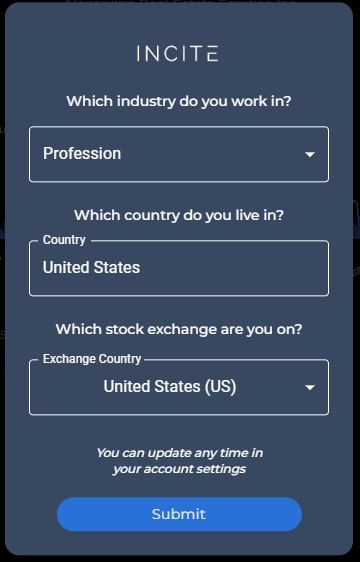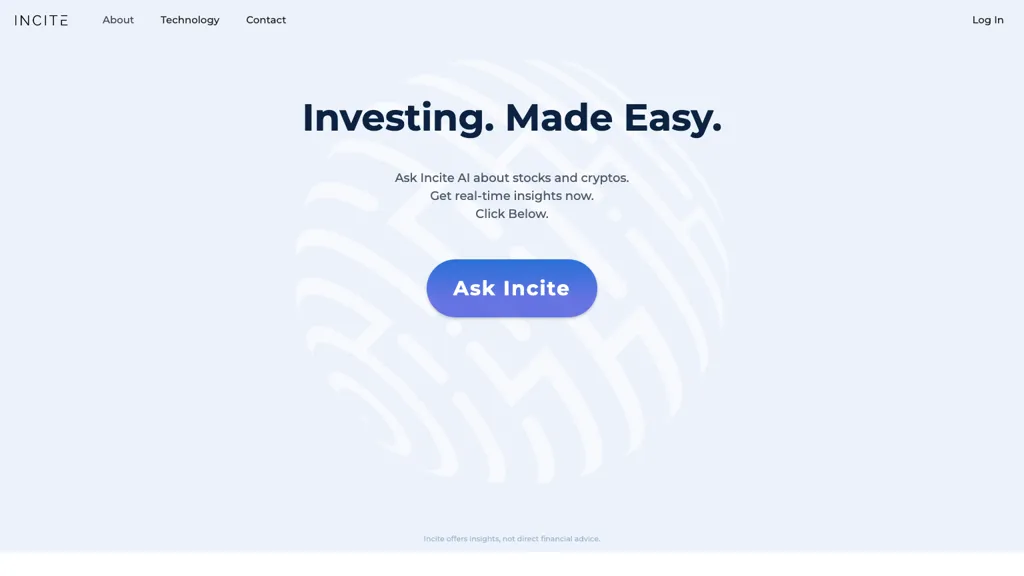20 Handy Suggestions To Picking AI Stock Picker Platform Sites
20 Handy Suggestions To Picking AI Stock Picker Platform Sites
Blog Article
Top 10 Tips To Help You Assess The Costs And Pricing Of Ai Trading Platforms That Forecast Or Analyze Price Of Stocks.
It is essential to consider the pricing and cost of AI trading platforms that predict/analyze stock prices. This will help you avoid any hidden costs or charges. Knowing the pricing structure is important for making an educated decision. Here are the top ten tips for evaluating cost and pricing:
1. Learn more about the pricing structure
Subscription: Be sure to determine if the platform charges an amount per month or a year, and what's included in each level.
Pay-per-use: Determine whether the amount you pay for is based on the usage of the platform (e.g. the number of transactions or requests for data).
Freemium Model: Examine to see if the website has a free tier with only a few features. The premium features are charged for.
2. Compare Pricing Tiers
Find out what features are included in each price stage.
Scalability. Make sure you are getting the best price to meet your requirements.
Upgrade flexibility: See whether it's possible to upgrade or downgrade the plan based on your changing needs.
3. Evaluate Hidden Costs
Data fees: Check whether the platform is charging extra access to premium data (e.g., real-time data, advanced analytics).
Brokerage fees: Find out whether the platform is charged additional fees to execute trades or to integrate with brokers.
API usage: Evaluate whether API access costs are higher or if API usage is high-frequency.
4. Demos as well as Free Trials and Test Drives
Trial period: Check out platforms that give you a no-cost demo or trial to try their capabilities.
Review the limits of a free trial. Does it contain all features?
You have no commitment options: Make sure you have the option to cancel your trial without being charged in the event that the service doesn't meet your needs.
5. Find the most recent discounts and offers
Discounts on annual subscriptions The monthly plan is compared with an annual subscription.
Referral programs: Find out whether you can earn discounts or credits for referring others to the platform.
Pricing for institutions If you're part a larger organization, inquire about bulk or institutional pricing.
6. Examine the Return on the investment
Cost vs. worth: Evaluate whether the features and forecasts of the platform justifies the cost. For instance, can it help you make better trade decisions or save time?
Performance track record Review the platform's rates of success or user feedback to gain an understanding of the potential ROI.
Cost alternatives - Compare the platform's cost with the potential cost in the event that you do not use it (e.g., missed opportunity, manual analysis time).
Review Cancellation & Refund Policies
The cancellation policy should be followed: Ensure you are able to cancel your subscription without penalty, or with no hidden fees.
Make sure to check if there's any policy on refunds for subscriptions you haven't used.
Auto-renewal. Check whether the platform automatically renews your account. If so then you'll have to figure out how to optout.
8. Assess Transparency in Pricing
A clear pricing page: Make sure that the platform has transparent and clear pricing page with no fees hidden.
Customer support: Contact customer support to discuss any pricing or cost issues.
Contract Terms: Review the contract's terms to find out the existence of penalties or long-term obligations.
9. Check out your competition
Comparing features and prices between platforms is a great method to ensure you're getting a good deal.
User reviews: Study user feedback to see whether others think that the platform is worth the cost.
Market positioning: Determine the price of the product, whether it's an upper-end, mid-range or low-cost option and whether it's in line with what you would expect.
10. Examine the Long-Term Costs
Price increases: Find out whether and when the platform raises its prices.
Additional features to your plan: Determine if you need an upgrade, or if the latest features are in your plan.
Costs of scaling: Make sure the platform pricing is reasonable when you expand your trading or data requirements.
Bonus Tips:
Trial different platforms: Try different platforms in free trials to test their performance and value.
Negotiate the cost: If you are frequent users or part of a large organization You can inquire for discounts or special pricing.
Check for educational resources Certain platforms provide free educational tools or resources that add value over their core features.
These tips will help you assess the price and cost of AI trading platforms that can predict or analyze price fluctuations in stocks. This way, you'll be able to choose the platform that best fits your budget, with the features and capabilities you require. A well-priced trading platform will achieve the ideal equilibrium between affordability and features which will help you maximize your success. Take a look at the most popular inciteai.com AI stock app for site info including ai stock, trading with ai, ai investing platform, ai trading tools, trading with ai, chatgpt copyright, ai investment platform, market ai, trading ai, ai stock picker and more.
Top 10 Tips For Evaluating The Risk Management Of Ai Stock Forecasting/Analyzing Trading Platforms
Risk management is a crucial element of any AI stock predicting/analyzing trading platform, as it helps protect your capital and reduce the risk of losses. Platforms with robust risk-management tools can help you navigate uncertain markets and make informed choices. Below are the top 10 tips for assessing the capability of risk management in these platforms:
1. Analysis of Stop-Loss and Take-Profit Features
Customizable Levels: Be sure the platform allows you to create individual stop-loss limits and goals for taking profits in your trading strategies or trades.
Check the platform to see if it supports trailing stopped which adjusts automatically when the market moves in your direction.
Find out if your platform permits you to place stop-loss orders which guarantee closing the trade at the price you have specified, even in unstable markets.
2. Use Position Sizing Tools to Assess Positions
Fixed amount: Make sure that the platform you're using permits you to set the size of your position in accordance with a set amount.
Percentage in portfolio: You can manage your risk by determining position sizes proportionally as a percentage.
Risk-reward-ratio: Verify whether the platform lets users set individual risk/reward ratios.
3. Check for Diversification Support
Multi-assets trade: Ensure that the platform supports trading across multiple asset categories (e.g. ETFs, stocks, options, forex etc.) to diversify portfolio.
Sector allocation: Find out whether the platform has tools to monitor and manage the exposure of sectors.
Geographic diversification: Make sure that the platform you trade on allows international markets to spread risk across different geographical areas.
4. Evaluation of Leverage and Margin Controls
Margin requirement: Ensure that the platform clearly outlines any margin requirements that apply to leveraged trades.
Limits on leverage: See if the platform allows you to set limits on leverage to control risk exposure.
Margin calls - Examine to see if your platform alerts you to margin calls promptly. This will prevent liquidation.
5. Assessment Risk Analytics and reporting
Risk metrics: Ensure the platform provides key risk metrics (e.g., Value at Risk (VaR) Sharpe ratio drawdown) for your portfolio.
Scenario analysis: Find out if the platform allows you to model different market scenarios to assess possible risks.
Performance reports: Check whether the platform offers complete performance reports, including the risk-adjusted return.
6. Check for Real-Time Risk Monitoring
Monitoring your portfolio: Make sure the platform allows live monitoring of the risk exposure to your portfolio.
Alerts and notifications: Verify whether the platform offers real-time alerts for risk-related events (e.g. margin breach and Stop-loss triggers).
Check the dashboards for risk. If you want to have a comprehensive view of your risks, make sure that they are customizable.
7. Assess the effects of stress testing and backtesting
Stress testing - Ensure that your platform lets you test your portfolios and strategies in extreme market situations.
Backtesting Check to see if your platform supports backtesting using historical data for assessing the performance and risk.
Monte Carlo Simulations: Check whether the platform uses Monte Carlo simulations in order to assess and model various possible results.
8. Review Compliance Risk Management Regulations
Make sure that the platform is in compliance with the regulatory compliance requirements (e.g. MiFID II regulations in Europe, Reg T regulations in the U.S.).
Best execution: Check if the platform follows the most efficient execution procedure, which makes sure that transactions are executed at the best price so as to limit any loss.
Transparency Examine the transparency of the platform and the clarity of risk disclosure.
9. Check for User-Controlled Parameters
Custom Risk Rules: Make sure you have the ability to create custom rules for risk management (e.g. a maximum daily loss, or a maximum size of tradable position).
Automated controls for risk: Check to see whether your system can enforce risk management rules based upon the parameters you've set.
Manual overrides: Make sure to check if the platform allows manual overrides of automated risk controls in case of emergency.
10. Review User Feedback and Case Studies
User reviews: Examine feedback from users to assess the effectiveness of the platform's risk management.
Case studies: Look for cases studies or testimonials that highlight the capabilities of the platform for managing risk.
Forums for community members: Find out if there's an active community of traders who share their tips and strategies for managing risk.
Bonus Tips
Trial period for free: Try the risk management features of the platform using real-world scenarios.
Customer support: Make sure the platform provides robust support for any queries or concerns related to risk management.
Educational resources: Find out if your platform offers instructional materials or tutorials that provide information on risk management techniques.
If you follow these guidelines, you can determine the capabilities of an AI software for analyzing and predicting stocks to control risks. This will allow you to choose a platform that safeguards your capital, and minimizes any potential losses. Tools for managing risk that are reliable are essential for trading in unstable markets. Read the top rated best ai penny stocks for website tips including best ai penny stocks, ai stock price prediction, best ai penny stocks, ai stock predictions, can ai predict stock market, ai stock price prediction, invest ai, best ai stock prediction, best ai stock prediction, ai copyright signals and more.